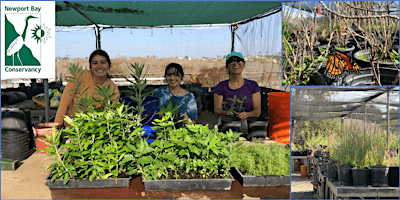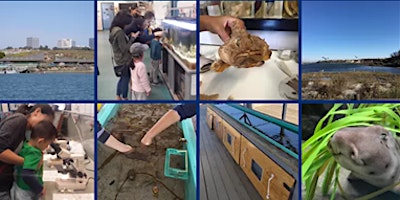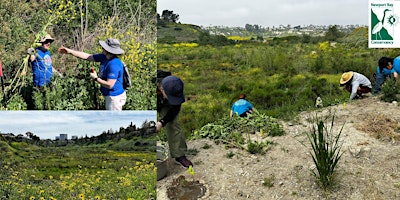 Big Canyon is the largest remaining natural canyon on the east side of Newport Bay. The Conservancy is the final phase of the multi-phase water quality, restoration, and adaptation project in Big Canyon Nature Park. The 60-acre open space is located at the downstream end of the Big Canyon Watershed in the City of Newport Beach, within Orange County, California. Big Canyon Creek drains the 1,300-acre Big Canyon Watershed directly into the Upper Newport Bay Ecological Reserve (UNBER) and State Marine Conservation Area. The area it has been heavily influenced by the construction of a salt evaporation pond, historical placement of dredge and fill material, interim restoration efforts, and other human activities. Stockpiling of dredge fill during the 1950s and 1960s within Big Canyon Creek raised the elevations within the canyon and consequently channelized the creek to the north. The creek now winds through the Nature Park in a general southeast to northwest direction and then discharges into Upper Newport Bay.
Big Canyon is the largest remaining natural canyon on the east side of Newport Bay. The Conservancy is the final phase of the multi-phase water quality, restoration, and adaptation project in Big Canyon Nature Park. The 60-acre open space is located at the downstream end of the Big Canyon Watershed in the City of Newport Beach, within Orange County, California. Big Canyon Creek drains the 1,300-acre Big Canyon Watershed directly into the Upper Newport Bay Ecological Reserve (UNBER) and State Marine Conservation Area. The area it has been heavily influenced by the construction of a salt evaporation pond, historical placement of dredge and fill material, interim restoration efforts, and other human activities. Stockpiling of dredge fill during the 1950s and 1960s within Big Canyon Creek raised the elevations within the canyon and consequently channelized the creek to the north. The creek now winds through the Nature Park in a general southeast to northwest direction and then discharges into Upper Newport Bay.
PHASE III Groundbreaking coming Fall 2025. Phase III consists of several components, including restoring 14 acres of historical salt marsh and establishment of transitional wetland habitats, providing long-term benefits to climate resiliency along the California coast. This Project provides a unique opportunity to establish transitional zones as sea level rise (SLR) alters habitats within the UNBER. Phase III proposes to extend the saltwater influence into the Project limits, allowing the tidal extent and inundation to increase with SLR. Transitional zones will allow migration of salt marsh vegetation with future SLR to improve the overall resiliency of salt marsh in UNB, supporting sensitive coastal habitats and several federally and state listed species. Design below courtesy of Burns & McDonnell.
PHASE II Monitoring and Maintenance Ongoing. Check out this  plant palate featuring what was planted to start recognizing them as they grow or join us on Thursday mornings as we make sure we keep the site free of any non-native invasive plants. Phase 2A also included the HUGE task of removing a 6-acre infestation of Brazilian Pepper Trees. Check out why this was so important through watching the Project Kickoff video on YouTube.
plant palate featuring what was planted to start recognizing them as they grow or join us on Thursday mornings as we make sure we keep the site free of any non-native invasive plants. Phase 2A also included the HUGE task of removing a 6-acre infestation of Brazilian Pepper Trees. Check out why this was so important through watching the Project Kickoff video on YouTube.
Project Partners & Funders:
California State Coastal Conservancy
US Fish & Wildlife Service
Ocean Protection Council
California Department of Fish and Wildlife
City of Newport Beach
Burns & McDonnell
ESA
For more information on Big Canyon, visit the City of Newport Beach’s Resource and Recreation Management Plan for the entire space.










